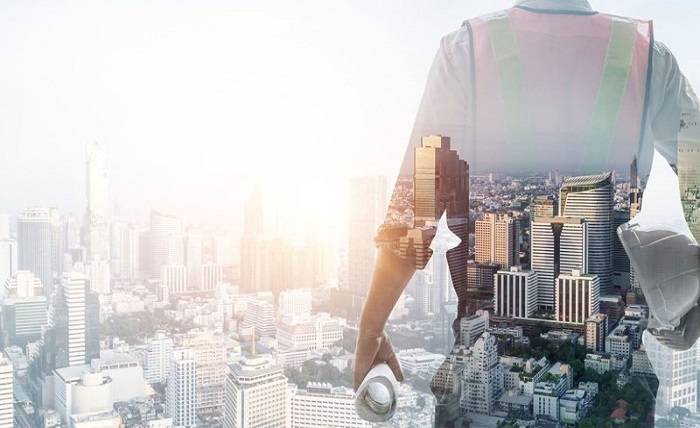The construction industry is undergoing a profound transformation, driven by technological advancements, sustainability imperatives, and evolving societal needs. As we navigate through 2025, several key trends are shaping the future of building, promising smarter, more efficient, and environmentally responsible construction practices.
1. Embracing Smart Technologies
Artificial Intelligence and Robotics
Artificial intelligence (AI) and robotics are revolutionizing construction processes. AI algorithms optimize project planning, resource allocation, and risk management, leading to more efficient and cost-effective construction. Robotics, including drones and automated machinery, enhance precision and safety on construction sites, reducing human error and labor costs.
Building Information Modeling (BIM)
BIM technology allows for the creation of digital representations of physical and functional characteristics of buildings. This facilitates better collaboration among stakeholders, improves accuracy in project execution, and enables real-time updates, minimizing errors and delays.
2. Sustainable and Green Building Practices
Energy-Efficient Designs
With buildings accounting for a significant portion of global energy consumption, there is a strong push towards energy-efficient designs. Incorporating features like high-performance insulation, energy-efficient HVAC systems, and renewable energy sources such as solar panels can drastically reduce a building’s carbon footprint.
Sustainable Materials
The use of sustainable materials is gaining momentum. Recycled steel, bamboo, and reclaimed wood are being utilized to minimize environmental impact. Additionally, innovations in concrete, such as self-healing concrete, are enhancing durability and reducing maintenance needs.
Climate-Adaptive Building Shells
Climate-adaptive building shells (CABS) represent a significant advancement in responsive architecture. These dynamic facades and roofs adjust to environmental conditions, optimizing energy use for heating, cooling, and lighting, and improving indoor air quality.
3. Modular and Prefabricated Construction
Modular and prefabricated construction methods are streamlining the building process. Components are manufactured off-site and assembled on-site, reducing construction time and costs. This approach also allows for better quality control and less waste generation. While these modern methods dominate contemporary projects, precise Victorian style home builders continue to blend craftsmanship with innovation, showing that traditional elegance can coexist with modern efficiency.
3D Printing in Construction
3D printing technology is making its mark in construction, enabling the creation of complex structures with precision. This method reduces material waste and allows for the use of innovative materials, contributing to more sustainable building practices.
4. Smart Cities and Infrastructure
The concept of smart cities is gaining traction, where urban areas are equipped with sensors and IoT devices to monitor and manage resources efficiently. Smart infrastructure, including intelligent transportation systems and waste management solutions, enhances the quality of life for residents and reduces environmental impact.
5. Advanced Workforce Training and Safety
As construction becomes more technologically advanced, there is a growing need for skilled labor. Virtual reality (VR) and augmented reality (AR) are being utilized for training purposes, providing workers with immersive experiences to learn complex tasks safely. These technologies also aid in hazard identification and safety protocol adherence.
6. Regulatory Changes and Policy Support
Governments worldwide are implementing policies to encourage sustainable construction practices. Incentives for energy-efficient buildings, stricter building codes, and support for green technologies are driving the industry towards more responsible construction methods.
7. Resilient and Adaptive Design
In response to climate change and natural disasters, there is an increased focus on resilient and adaptive building designs. Structures are being designed to withstand extreme weather events, with features like elevated foundations, reinforced materials, and flexible layouts that can adapt to changing environmental conditions.
8. Digital Twins and Real-Time Monitoring
Digital twin technology creates virtual replicas of physical buildings, allowing for real-time monitoring and management. This technology aids in predictive maintenance, energy management, and space optimization, leading to more efficient building operations.
9. Circular Economy in Construction
The construction industry is moving towards a circular economy model, focusing on the reuse and recycling of materials. Deconstruction, rather than demolition, is being emphasized to salvage valuable materials, reducing waste and conserving resources.
10. Urban Farming and Green Roofs
Integrating agriculture into urban environments is becoming more common. Green roofs and urban farming initiatives not only provide fresh produce but also contribute to biodiversity, improve air quality, and reduce the urban heat island effect.
Conclusion
The future of construction is characterized by innovation, sustainability, and adaptability. As technology continues to evolve and societal expectations shift, the industry is poised to deliver buildings that are smarter, more efficient, and better aligned with environmental stewardship. Embracing these trends will be crucial for stakeholders aiming to remain competitive and contribute positively to the built environment.

